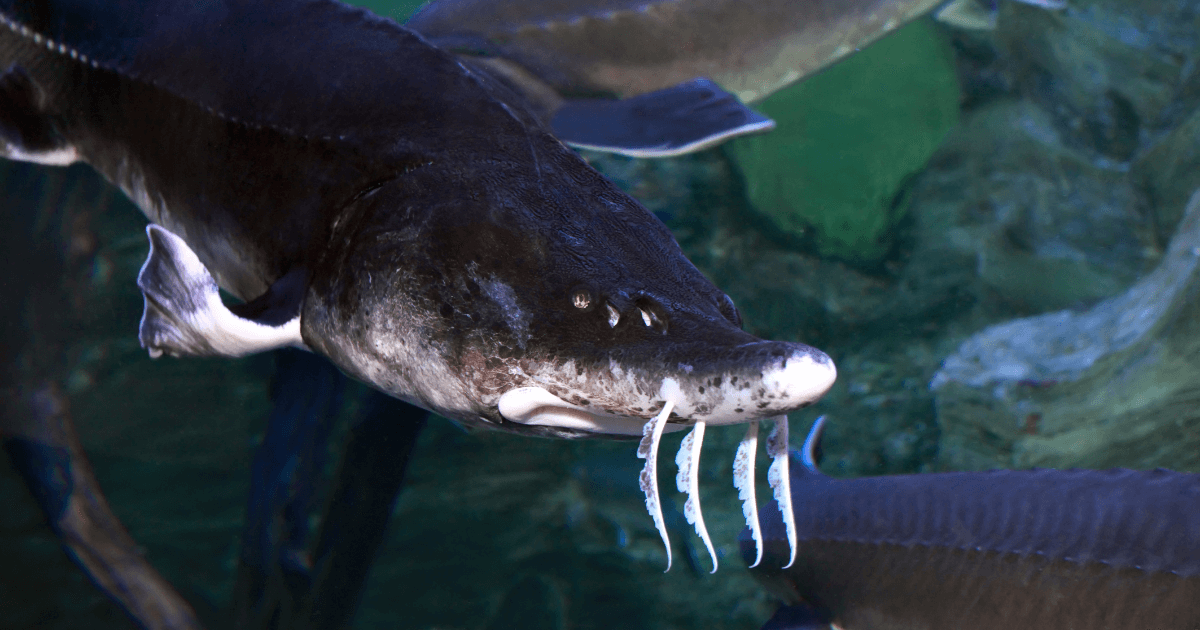The journey of Beluga caviar from the river to your table is a fascinating process that involves careful harvesting, meticulous preparation, and sustainable practices. We will explore the lifecycle of the Beluga sturgeon (Huso Huso), the methods of caviar production, and the steps taken to ensure sustainability.
The Lifecycle of the Beluga Sturgeon
Huso Huso, commonly known as the Beluga sturgeon, has a unique lifecycle that contributes to the rarity and value of its caviar.
-
Spawning and Early Life:
- Beluga sturgeons are born in freshwater rivers, where they hatch from eggs and spend the early years of their life. These fish are known for their slow growth rate and long lifespan.
-
Migration to the Sea:
- As they mature, Beluga sturgeons migrate to the Caspian Sea or Black Sea, where they spend the majority of their lives. They will return to their natal rivers to spawn, continuing the cycle.
Harvesting Beluga Caviar
The process of harvesting Beluga caviar is intricate and requires significant expertise.
-
Capture and Selection:
- Mature female sturgeons are carefully selected and captured during their spawning migration. The selection process ensures that only fish with high-quality roe are harvested.
-
Extraction:
- The caviar is extracted from the sturgeon with great care to preserve the integrity of the eggs. This process must be done quickly and efficiently to maintain the quality of the caviar.
-
Preparation:
- The extracted roe is cleaned, salted, and packed using traditional methods. The salting process, known as "malossol," uses minimal salt to enhance the natural flavor of the caviar.
Sustainable Practices in Beluga Caviar Production
Sustainability is a critical aspect of modern Beluga caviar production, given the endangered status of the Beluga sturgeon.
-
Aquaculture:
- Many producers have turned to aquaculture, or fish farming, to raise Beluga sturgeons in controlled environments. This practice helps reduce pressure on wild populations and ensures a steady supply of caviar.
-
Regulations and Conservation:
- International regulations, such as those enforced by CITES, help protect Beluga sturgeons from overfishing and illegal trade. Conservation programs aim to restore wild populations through habitat restoration and restocking efforts.
The Culinary Journey of Beluga Caviar
Once harvested and prepared, Beluga caviar embarks on its journey to the tables of gourmet enthusiasts around the world.
-
Quality Control:
- Strict quality control measures are in place to ensure that only the finest caviar reaches consumers. This includes rigorous testing for taste, texture, and appearance.
-
Distribution:
- Beluga caviar is distributed to high-end restaurants, specialty stores, and direct consumers. It is often sold in small, vacuum-sealed tins to preserve freshness.
-
Serving and Enjoyment:
- The presentation of Beluga caviar is as important as its preparation. It is typically served chilled, accompanied by simple garnishes that complement its flavor, such as blinis, toast points, or crème fraîche.
The journey of Beluga caviar from river to table is a testament to the dedication and expertise of those involved in its production. Understanding the lifecycle of the Beluga sturgeon, the harvesting process, and the importance of sustainability allows us to appreciate the effort that goes into bringing this luxurious delicacy to our plates.
For more information on related topics, check out our other blog posts:




